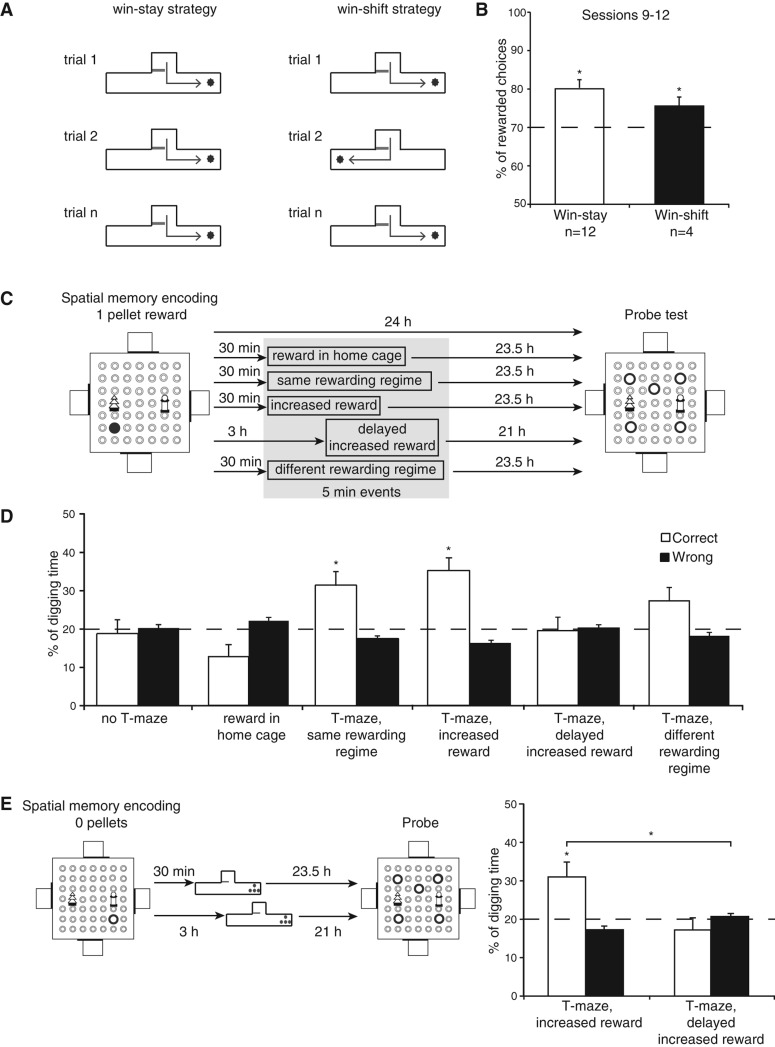Figure 3.
Experiment 2: The impact of a rewarded learning in the T-maze, with or without procedural novelty, on spatial memory persistence. (A) Identification of the preferred strategy by individual animals in the T-maze task. Some animals always visited the right (shown) or the left (not shown) arm after leaving the start box; these are indicated as “win-stay” animals. Other animals switched between right and left arms in successive trials; these are indicated as “win-shift” animals. (B) Performance of the animals in the two groups (i.e., win-stay and win-shift) over the last four sessions was consistently above chance level. (C) Schematic representation of the procedures. Rats received an encoding trial with one pellet, followed by various modulating events, and tested at 24 h for the spatial memory. The modulating events include rewards in the home cage or rewarded tasks in a T-maze. (D) The 24-h spatial memory of one-pellet encoding was at chance level (see Fig. 2C, right) and was not enhanced by rewards in the home cage. However, this 24-h spatial memory was above chance when the T-maze was introduced 30 min, not 3 h, after the encoding. (E) Spatial memory produced by encoding with no reward (i.e., no pellets) was rescued by the introduction of a T-maze task with increased reward 30 min after encoding, but not when the task was given 3 h after encoding.

